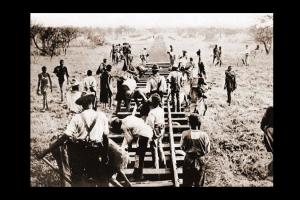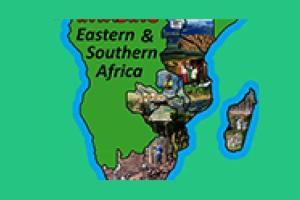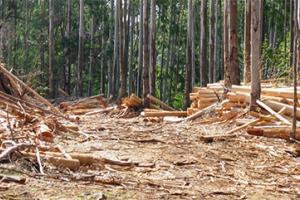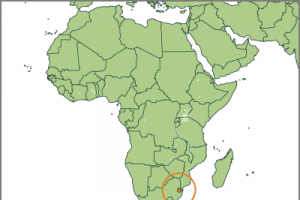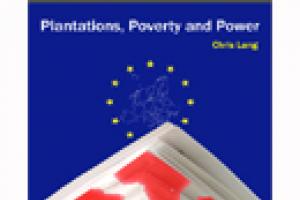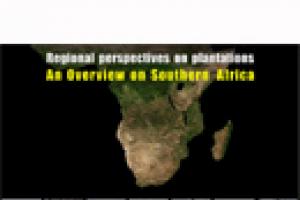In order to better understand peoples' struggles across the southern and eastern regions of Africa, reflecting on its history is crucial. This editorial highlights some parts of this history. And this, of course, is just the tip of the iceberg.
Swaziland
Bulletin articles
9 January 2018
Other information
9 January 2018
This briefing, compiled by the World Rainforest Movement (WRM) and the Timberwatch Coalition (TW), is now also available in Swahili. It focuses on various internal and external factors determining changes in the extent of land under industrial tree plantations in 11 eastern and southern African countries: Malawi, Mozambique, Zambia and Zimbabwe; Kenya, Tanzania and Uganda; South Africa, Swaziland and Lesotho; and Madagascar.
Publications
5 October 2016
Download the publication. Also available in Swahili.
Other information
30 August 2012
Members of farmers’ organizations, women’s movements and civil society organizations from South Africa, Zimbabwe, Malawi, Swaziland, Lesotho, the DRC and Mozambique gathered on August 15-16 in Maputo, Mozambique, to analyze the multi-dimensional global crisis and the response of African governments.
Other information
30 January 2009
Before the current global economic meltdown, the pulp industry had ambitious expansion plans. Although the industry was closing mills in the North, it was expanding dramatically in the South where about five million tons of new capacity was due to start up each year for the next five years. Vast areas of monoculture tree plantations have been established to feed raw material to huge new megamills, particularly in Latin America, southeast Asia and South Africa.
Publications
18 December 2008
By Chris Lang
Publications
15 December 2008
Timber plantations in southern Africa are concentrated in South Africa, Zimbabwe and Swaziland, but they are also expanding in Mozambique. There are smaller areas in Angola, Zambia, Malawi and Tanzania. In South Africa, the largest areas are in the provinces of Mpumalanga, KwaZulu-Natal and the Eastern Cape, covering 1.5 million hectares of land. Additionally, an estimated 1.6 million hectares have been invaded by plantation species such as acacias (wattle), eucalyptus (gum) and pines.
Bulletin articles
5 December 2007
Peter George is a farmer. Or, to be more accurate, he used to be a farmer. He bought Elangeni Farm in the cool highveld of Swaziland in the mid-1970s. He grew vegetables along with some eucalyptus and acacia trees. He drove twice a day to the local market to sell his cabbages. He had a few sheep, chickens, two cows and a half-blind sheep dog. After a few years he started a small fish farm, selling to local restaurants and hotels. He built his own house, got married and started a family.
Bulletin articles
5 December 2007
In the general public perception, trees are automatically associated with environmental benefits, and there is consumer demand for “cuddly” offset tree-related projects, as opposed to the type of industrial emissions reductions that have dominated the Clean Development Mechanism (CDM) market. It is estimated that some 40% of carbon credits generated in the voluntary market comes from tree-related projects.
Bulletin articles
23 April 2007
The case study “Swaziland: The myth of sustainable timber plantations” carried out by Wally Menne and Ricardo Carrere and published in March 2007, aims at unveiling the myth of sustainable plantations in Swaziland and showing that large-scale monoculture tree plantations in this country have similar negative impacts as elsewhere and are no exception to the rule.
Other information
24 March 2007
Sappi's plantations in Swaziland are the epitome of what is wrong with industrial tree plantations. More than fifty years of living with plantations has done less than nothing to develop the country's people. Species-rich grasslands were destroyed and people moved to make way for the plantations, when they were established as a British “aid” project in the 1950s. The plantations are monocultures of pine trees, exotic to Swaziland. Every year, Sappi clearcuts a total of 3,000 hectares of its plantations, leaving vast scars on the landscape.
